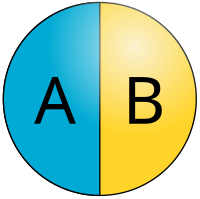
Photo from wikipedia
The development of platinum(Pt)-drugs for cancer therapy has stalled, as no new Pt-drugs have been approved in over a decade. Packaging small molecule drugs into nanoparticles is a way to… Click to show full abstract
The development of platinum(Pt)-drugs for cancer therapy has stalled, as no new Pt-drugs have been approved in over a decade. Packaging small molecule drugs into nanoparticles is a way to enhance their therapeutic efficacy. To date, there has been no direct comparison of relative merits of the choice of Pt oxidation state in the same nanoparticle system that would allow its optimal design. To address this lacuna, we designed a recombinant asymmetric triblock polypeptide (ATBP) that self-assembles into rod-shaped micelles and chelates Pt(II) or enables covalent conjugation of Pt(IV) with similar morphology and stability. Both ATBP-Pt(II) and ATBP-Pt(IV) nanoparticles enhanced the half-life of Pt by ∼45-fold, but ATBP-Pt(IV) had superior tumor regression efficacy compared to ATBP-Pt(II) and cisplatin. These results suggest loading Pt(IV) into genetically engineered nanoparticles may yield a new generation of more effective platinum-drug nanoformulations.
Journal Title: Nano letters
Year Published: 2022
Link to full text (if available)
Share on Social Media: Sign Up to like & get
recommendations!